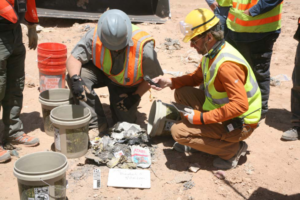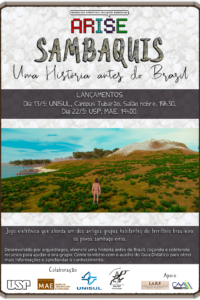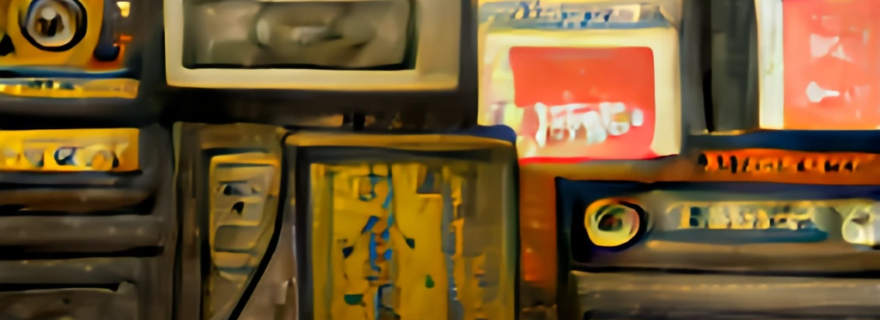Can artifacts play? Yes, they can!
You may have heard phrases like "This game is a waste of time" or "It’s all about fantasy". Amanda Viveiros uncovers archaeological games as sites of knowledge so that when you hear those phrases again, you will be able to reply "games are learning tools, and right now, I'm playing and learning".
Have you ever played a game with a historical or archaeological narrative? Those on the market today include Assassin's Creed Origins, Assassin's Creed Odyssey, Assassin's Creed Valhalla, and Lara Croft: Tomb Raider, among others.
We can associate archaeology and games with a new methodology called "Archaeogaming". As Andrew Reinhard defines it, “Archaeogaming is the study of Archaeology in and of games” (Reinhard, 2018). Fortunately, we can do this in all kinds of ways, both in terms of software (the immaterialness, programs, and the virtual world) and hardware (material electronical components). The first videogame excavation in history, conducted by Reinhard in 2014 in Alamogordo, Mexico, was undertaken in order to exemplify proof of concept, demonstrating that the study of the past can be conducted through videogames. The aim of the excavation was to find the ATARI cartridges thought to have been buried in Alamogordo in the 1980’s after a crash in the game industry. The result: what had been treated like an urban legend was discovered to be literally true. More than 1300 buried cartridges were found! This excavation formed part of a documentary named “Atari: Game Over”.

Unquestionably, archaeology is the study of the past, but more than that it is the study of material culture. Scholars are studying contemporary and digital content in an archaeological context. Videogames are human products and can be systematized as artifacts or digital materiality (Morgan, 2016). Furthermore, we can now excavate games! Digital games can be a new type of archaeological site with its own environment, functioning, and landscape (Mol et al. 2016).
How can we excavate games? By systematizing them: creating patterns, delimitating our area of study, tracing the stratigraphy (layers of archaeological remains), recreating possible scenarios, and so on. These are the typical archaeological methods and practices that can be applied on videogames studies.
Archaeologists not only study games, but they make them as well. The Last Banquet in Herculaneum and SAMBAQUIS: A History Before Brazil are both videogames made solely by archaeologists from the University of Sao Paulo (USP). The first was made in the Laboratory for Roman Provincial Archaeology (LARP), and the second was made by the Interactive Archaeology and Electronic Simulations (ARISE) research group. I am a member of both research groups which are headquartered in the Museum of Archaeology and Ethnology (MAE) located at the University of São Paulo (USP). Here you can see the teaser for these two games:
THE LAST BANQUET OF HERCULANEUM, YouTube SAMBAQUIS – A HISTORY BEFORE BRAZIL, YouTube.The Last Banquet of Herculaneum depicts the last day in Herculaneum before the Vesuvius volcano eruption in 79 AD. The game showcases elements of material culture present in the Roman world and has interactive environments represented in an immersive three-dimensional platform. The player is encouraged to enter and experience common scenarios in Rome, such as: Domus (wealthy roman house), the Market, the Pottery Workshops, the Warehouse and the Sacred Area. (Fleming & Martire, 2019).

Sambaquis – A History Before Brazil is centered around a specific type of archaeological site named Sambaquis ('heap of shells' in Tupi-Guarani Language). This type of site is frequently found in the south and southeast of Brazil. The game introduces you to a group of “sambaquieiros” (a native group) from 3000 years ago, before Brazil’s colonization. As a player, you will encounter many of the habits and beliefs of this native group, words in Tupi-Guarani, different types of material culture, and an amazing narrative that mixes the past and the present in the discovery of a mysterious skeleton (Martire et al., 2018).

Both websites are available in three languages (English, Spanish and Portuguese), and the majority of digital products created by these two aforementioned research groups are in Portuguese and English. All products found on the websites are free of charge, so they can be played and shared worldwide. The goal is to teach in an enjoyable and interactive way whilst spreading knowledge about archaeology and heritage. A huge part of this objective was achieved. Since their launch, both games have been used by schools in the municipality of São Paulo and in the State. They also appear in school textbooks as suggested activities.
Our aim is to make knowledge accessible, scalable, and gratuitous. Learning can also be fun too. Digital products that spread knowledge focusing on learning deserve to be valued inside and outside the academy. The fun will not diminish the value of the product because the fun is not a villain, it is an ally.
Do you remember the teaser's opening sentence, "This game is a waste of time”? Now we know that we can learn through games. They are a new way to transform information. Games can develop distinct potentialities or stimulus and help the player (or the designer) to learn or improve specifical skills. Games are an effective method to transmit knowledge in social and cultural ways (Champion, 2017).
The last sentence was, "It is all about fantasy", so let's make the fantasy come to life! Fantasizing can be a beneficial tool, even in studies that talk about the past. Theories are tested all the time which were previously only a “fantasy”. We want creativity to be a part of a player's (and researcher’s!) mindset. Imagination fosters out-of-the-box thinking; it can make something that was previously impossible for non-dreamers, become reality.
To sum up, if somebody use these two phrases listed above, you can answer: "I'm not only playing, but I'm also learning a lot. Do you want to join? :)".
References
Champion, Erik. 2017. “Bringing your A-Game to Digital Archaeology: issues with serious games and virtual heritage and what we can do about it.” The SAA Archaeological Record 17 (2):24-27.
Martire, Alex, Jéssica Cardoso, Renata Silva, and Tomás Partiti. 2018. “Ciberarqueologia aplicada a sítios concheiros: o projeto sambaqui interativo.” Revista Memorare 5(1): 283-214.
Mol, Angus, C Ariese-Vandermeulebroucke, K Boom, A Politopoulos, and V. Vandermeulebroucke. 2016. “Video Games and Archaeology: Enjoyable but trivial? Video Games and Archaeology.” The SAA Archaeological Record 16(5): 11-15.
Morgan, Colleen. 2016. “Video Games and Archaeology.” The SAA Archaeological Record 16(5): 9-10.
Reinhard, Andrew. 2018. Archaeogaming: An Introduction to Archaeology in and of Video Games. New York: Berghahn Books.
Reinhard, Andrew. 2015. “Excavating Atari: Where the Media was the Archaeology.” Journal of Contemporary Archaeology 2(1): 86–93.
Fleming, Maria Isabel D Agostino (Org.) and Alex da Silva Martire(Org.). 2019. Humanidades digitais e arqueologia: o desenvolvimento de o último banquete em herculano. 1 ed. São Paulo: Universidade de São Paulo. Museu de Arqueologia e Etnologia.
© Amanda Viveiros and Leiden Arts in Society Blog, 2023. Unauthorised use and/or duplication of this material without express and written permission from this site’s author and/or owner is strictly prohibited. Excerpts and links may be used, provided that full and clear credit is given to Amanda Viveiros and Leiden Arts in Society Blog with appropriate and specific direction to the original content.



0 Comments